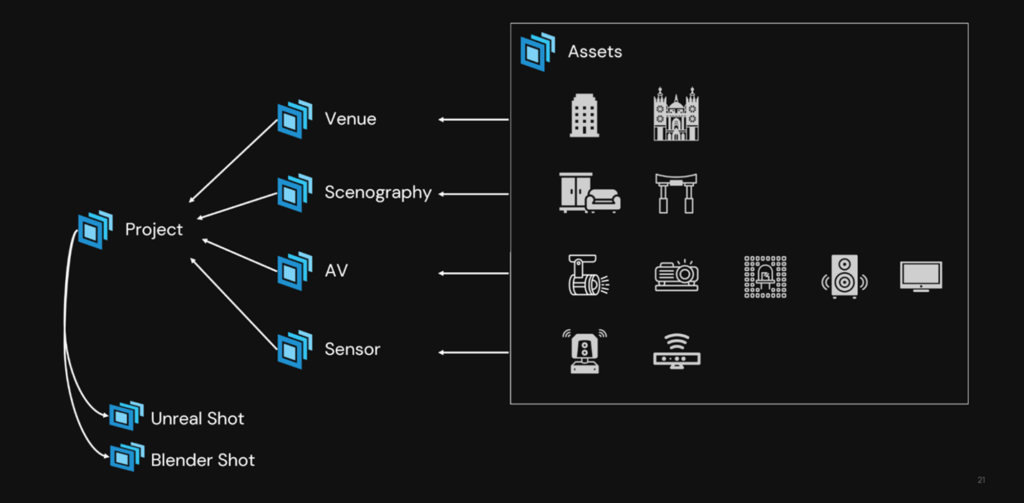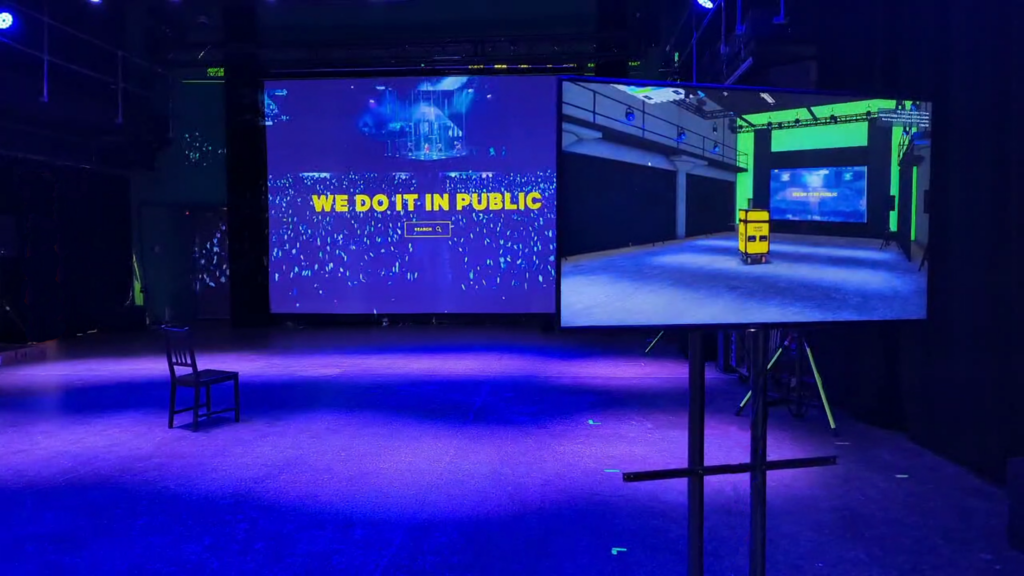Moment Factory creates novel multimedia experiences that require a diverse team of artists and technicians, all working individually and in concert. By building a digital twin in Nvidia’s Omniverse, they are able to tie in a range of different commercial and propriety software using OpenUSD, enabling each contributor to ply his or her craft without affecting others’ work. Using a digital twin also enables the artists and technicians to experiment digitally within a real-world replica environment, which is important given that each project the company crafts is as unique as it is complex. To make its digital twins even more robust, the company has built a number of connectors to Omniverse and is working on others so Moment Factory can push its digital platform even further to better suit its needs.

What do we think? We know that Omniverse is a platform that can be used across many industries, but hearing about how integral it is to the workflow of a company outside of AEC and manufacturing reminds us just how diverse this platform is.
Moment Factory’s diverse team uses a digital twin created in Omniverse to design cutting-edge entertainment
By now, no doubt you are familiar with the growing use of digital twins and how they are helping manufacturers and engineering companies better plan their real-world workflows and identify potential issues before they become actual problems. As discussed in our CAD report, CAD and AEC companies like Bentley Systems and Siemens continue to expand their digital twin tool sets and workflows. Meanwhile, Nvidia continues to work to make it easier for those companies as well as others across all industries to bring digital twins into their workflow through its Omniverse, which is built upon OpenUSD and enables users to develop OpenUSD-based 3D workflows and applications.
When it comes to digital twins, most of the attention is focused on manufacturing and the AEC industry, which comprises architects, designers, engineers, material suppliers, contractors, and maintenance and operational companies. However, many others are getting in on the act, too. One such company is Moment Factory, a multimedia entertainment studio that crafts live performances and interactive installations, creating immersive experiences through video, lighting, architecture, sound, software, and interactivity.
The studio is using OpenUSD with Omniverse to unify data from the various DCC tools used by the individuals on the team as they construct a digital twin of a planned real-world environment. Each Moment Factory project requires work by a diverse group of experts, from sceneographers and CAD drafters, to lighting and interactive designers, all of whom use different commercial and propriety software. By using OpenUSD and Omniverse, the skilled craftspeople are able to interact with the digital twin and work on their segment of the project without affecting the work by their teammates.

A digital twin enables Moment Factory to simulate complex, immersive events in real time before deploying them in the real world. They are also able to try out new concepts without the real-world material and labor expenses.
Video projection is a key aspect of the Moment Factory’s immersive events, and the team often experiments with mapping and projecting visual content onto architectural surfaces, scenic elements, and even moving objects. It is not unusual for the company to connect a media system to physical projectors via video cables. Using NDI, a video protocol developed by NewTek, the crew can replicate this virtually and within the digital twin through an NDI extension the company devised for Omniverse using the Omniverse Kit from Nvidia. With the extension, the group can simulate LED walls, screens, and pixel fields. The Omniverse-NDI-extension is free to use and available on GitHub.
The company also developed an Omniverse Connector for its proprietary multidisplay software X-Agora, for designing, planning, and operating shows, in addition to another one for converting MPDCI, a CESA standard describing multiprojector rigs, to USD. Other extensions are being explored that would enable Moment Factory to import lighting fixtures and rigs into its digital twins, as well as a UDP simulator extension connecting digital data to Lidar-compatible software.
Moment Factory ’s first digital twin is something it calls Blackbox, which acts as an experimental and prototyping space for previewing segments of the immersive experiences the company builds, from concept and design to integration and operation. Aside from using Blackbox to iterate on a project, the company also uses it to show customers various concepts that may be difficult to visualize otherwise.
“Everyone has their own idea of how a scene should be structured, so we needed a way to align everyone contributing to the project in a unified, dynamic environment,” explained Arnaud Grosjean, solution architect and project lead for Moment Factory’s Innovation Team. “With the digital twin, potential ideas can be tested and simulated with stakeholders across every core expertise.”
